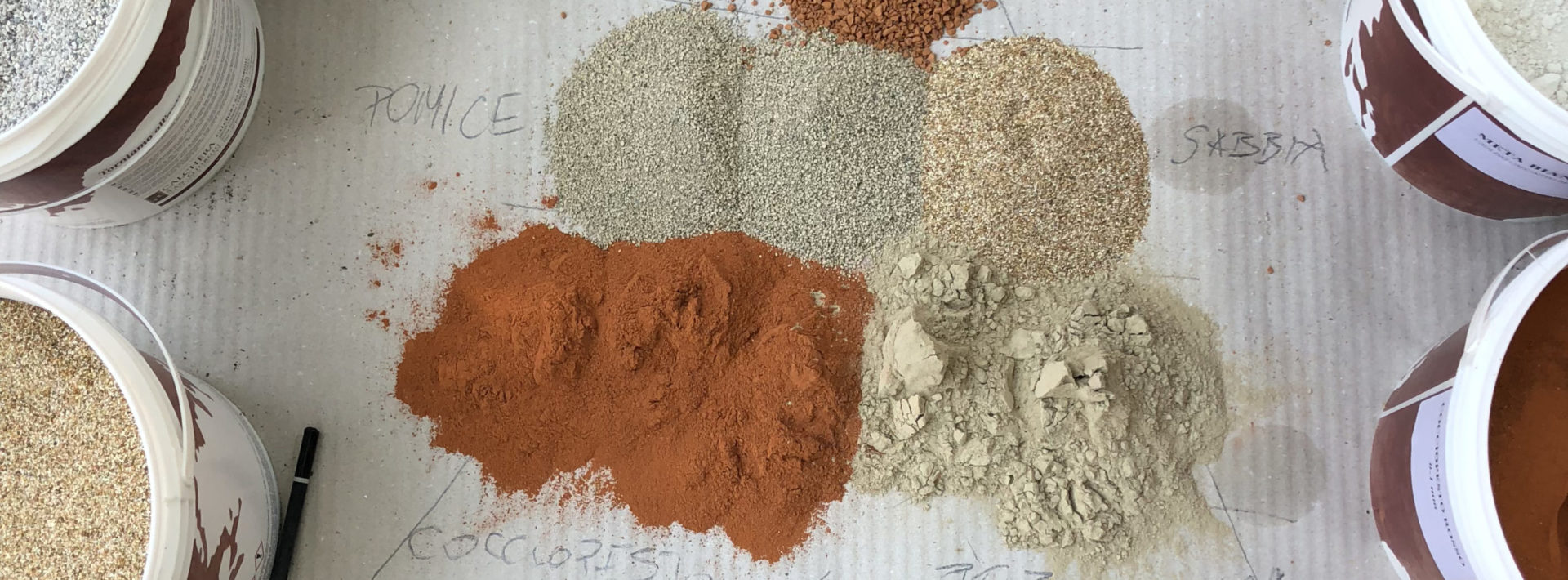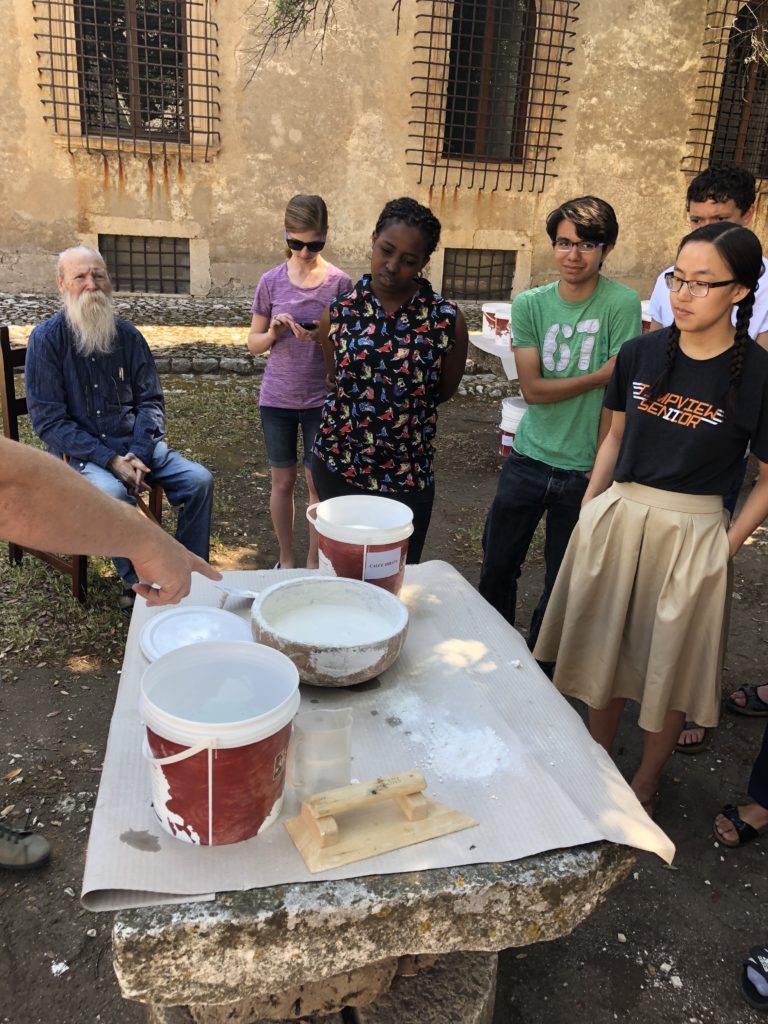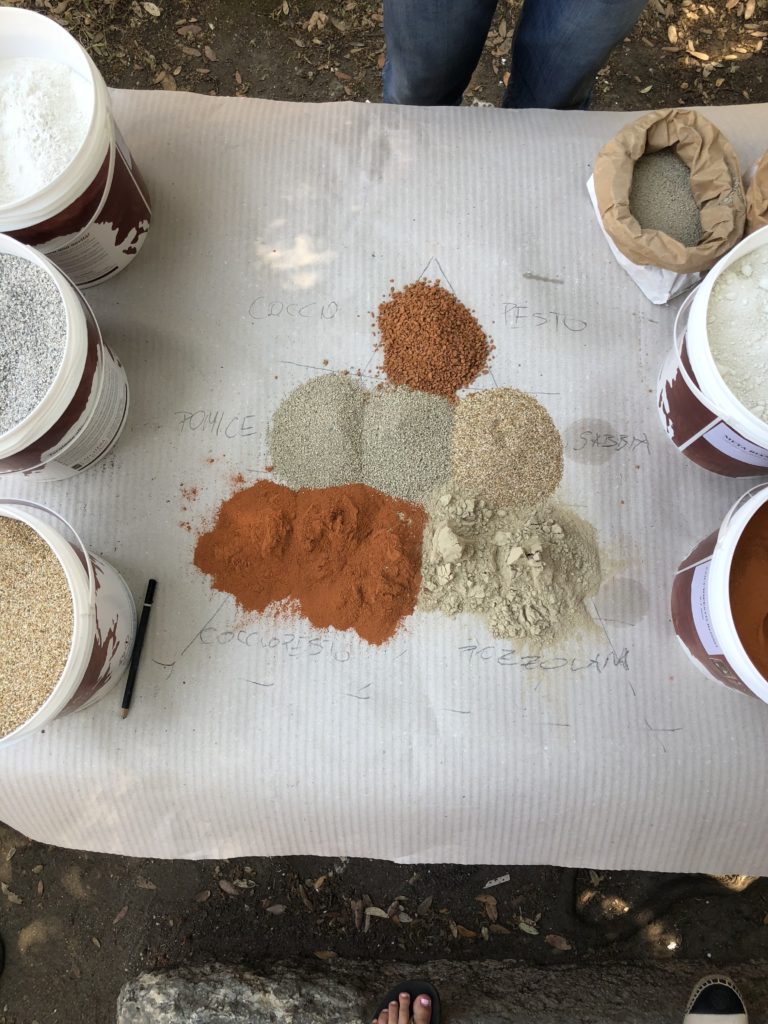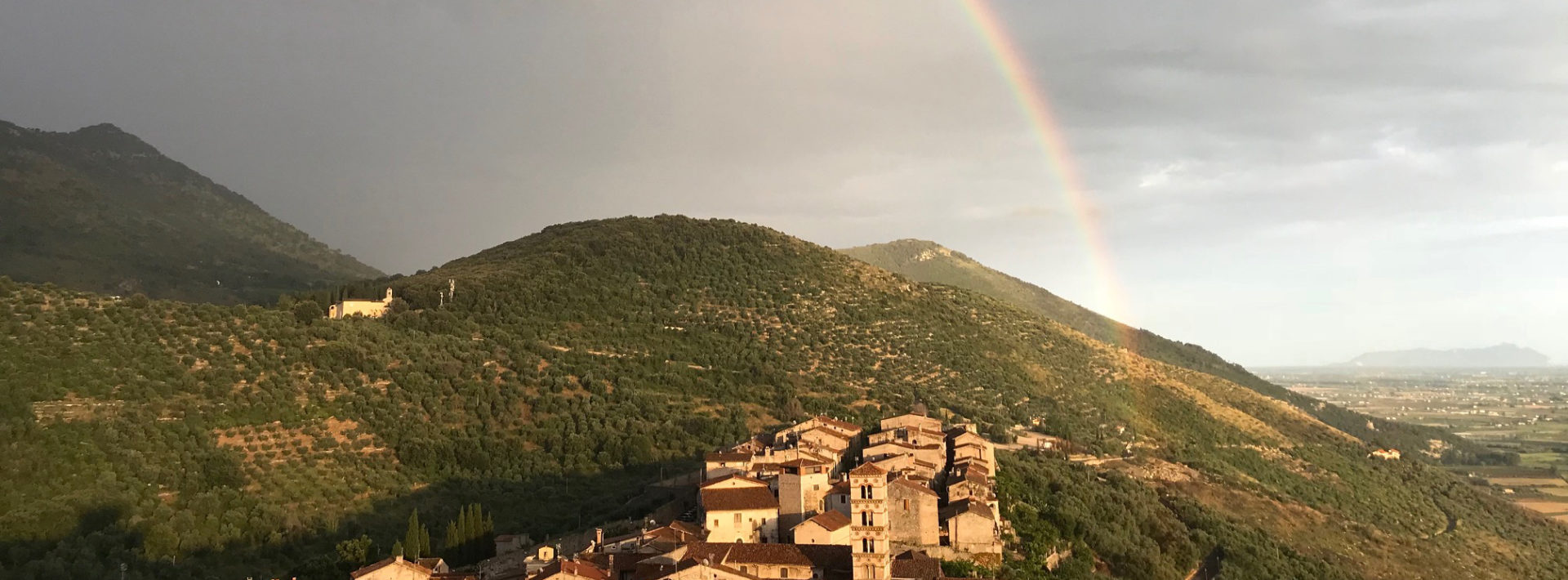ONE-MA3 2018: Masters of Mortar

By Sophie Cohen ’21
Today began with a lecture on geo polymers, limestones, and ancient building materials by the revered Gilberto Quarneti. We learned the steps to make limestone and some of the history behind how the Pantheon was built. Quarneti described how he is attempting to create a more sustainable and less environmentally damaging version of concrete using eggshells and rice pellets, as concrete is responsible for a large percent of carbon footprint. We then went outside to the courtyard for a few demonstrations on how to make mortar.

Quarneti and his scholarly assistant giving us a demonstration in the courtyard

Reactive parts of mortar mixes

The final product of a reaction used to make part of the mortar
In the courtyard, we learned how the Pantheon was made using different mineral grains and a model ratio pyramid. First, we saw how the calcium oxide was mixed with water. Then we made the aggregate out of several kinds of minerals. The next step was to mix 1 part calcium hydroxide with 3 parts aggregate. This resulted in mortar once fully mixed. The color came from the fine aggregate that we introduced into the mix.

The model ratio pyramid of the aggregate used to make the Pantheon
We then attempted to make our own mortar. We tried to make the most sustainable mortar we could come up with based on the materials we had at our disposal. We followed the ratios from the demonstration but used different materials. We spread the mortar on a brick, and with our leftover mortar we made figurines. Although we thought we were doing a fantastic job, it turns out that most of our mortar would not be sustainable or good for building. Luckily, Quarneti promised he would send us materials and recipes for when we are back at MIT.

The final result
This summer, Professor Admir Masic is leading a program on Materials in Art, Archaeology and Architecture (ONE-MA3), in which MIT undergraduates are conducting three weeks of fieldwork in Privernum, Pompeii and Turin as a prerequisite for the Fall 2018 MIT course, 1.057 Heritage Science and Technology. The program involves real-world analysis of ancient infrastructures and materials and focus on teaching ways to improve sustainability of the future through the study of ancient successes.



